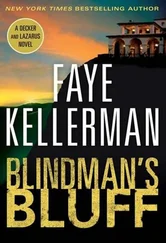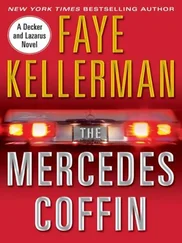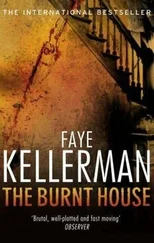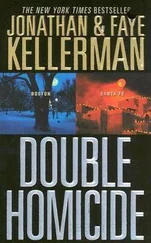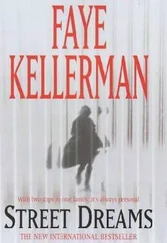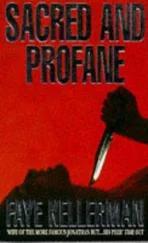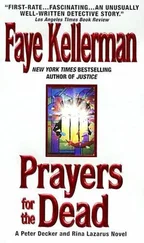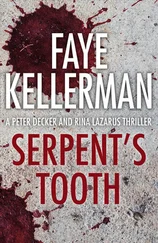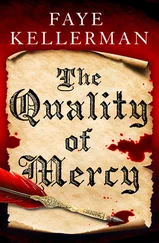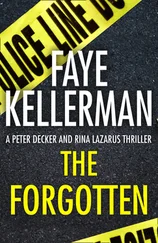“Lemme see how I can phrase this so it comes out right.” She stood up and began to pace. “Ken is a great guy, but tight with a buck, a quality that he passed on to my husband. I never ever buy things we can’t afford, but if I can afford it, I don’t see why I shouldn’t buy it. I mean, why do you work a million hours a week and earn all this money if you’re just going to have it molder in stocks and bonds. I realize that it’s Rick’s business, but he does have a family and why should our children do without when we can plainly do with.”
She stopped pacing.
“Anyway, this is all very beside the point. I don’t know anything about the theft. It’s not like it’s been preying on my mind. To tell you the truth, Tiffany isn’t my style. I am all about sleek and modern. This one room is my compromise to Rick. I mean where would I even put the windows? Although I suppose if I did steal them, I wouldn’t hang them out in the open. That would be pretty stupid.”
Decker nodded.
“Anything else? I’ve got a nail appointment.”
“Can you think of anyone in the family with money problems?”
“No … none of my business. I just wish they’d keep their noses out of my business.”
“Anyone in the family who has an addiction—drugs, gambling, sex, bad business? Or bad business deals?”
“Ken’s extended family is large: lots of cousins and second cousins. I’m sure there must be a couple with problems. Who doesn’t have a family without problems?”
“But nothing jumps into your head?”
She thought about it earnestly. “No … not really. But Rick and I try to mind our own business. We’re both way too busy to worry about other people. If other people don’t have a life, that’s not my problem. Are we almost done?”
“Just a few routine questions that I’m asking everyone on the list. When was the last time you were in Greenbury?”
“The funeral in the summer when Ken’s cousin died. We came in and left the same day. We were with everyone else.”
“So you haven’t been to Greenbury or the crypt since then?”
“No. I’ve got better things to do than to schlep up to a musty old crypt in the middle of nowhere.”
“Besides Max, who do you think might have wanted to steal the panels?”
She looked aghast. “I didn’t say Max stole them.”
“So who do you think did it?”
“How would I know?”
“I’m not saying you would know. I’m just asking your opinion.”
She stood up, examining her nails that looked perfectly groomed in contour and color. Then she shrugged. “No idea. All I know is it wasn’t me.”
Two phone messages, three texts, and five missed calls: all from McAdams. The kid either missed his company or had info. Decker dialed his cell. Harvard was peeved.
“What’s the purpose of giving me assignments and telling me to call back when you don’t answer your phone?”
“I was in the middle of an interview. What do you have for me?”
“Since I outrank you, what do you have for me ?”
Decker smiled. He recapped the interviews.
McAdams said, “She sounds like a nutcase.”
“She’s intense.”
“We should look into her financials.”
“Great idea except we have no legit reason to pull paper on her. Now it’s your turn.”
“Well, it seems that grave robbing and stealing from cemeteries are time-old traditions. I found quite a few cases of people stealing from cemeteries. The items usually taken are for personal use, things like urns, planters, gravestone decorations, and statues. The thieves usually live close to the graves and were caught with the items displayed in their houses or yards. Then there are the practical thieves who lift things like lawn mowers or weed whackers or shovels for their own gardening purposes.”
“Okay. What about valuable items?”
“I don’t know how relevant it is to our case because it’s old, but I’ll tell it to you anyway. A very well-known art dealer named Alastair Duncan was caught selling a stolen Tiffany window to a guy in Japan. It was looted from a local cemetery by a guy named Anthony Casamassima who used to work as a caretaker there.”
“Where’s there?”
“Salem Fields, New York. It’s a massive cemetery on the Brooklyn/Queens border. And it has a lot of Jewish mausoleums because a lot of the families used to belong to Congregation Emanu-El in Manhattan, which used the cemetery to buy plots for its membership. That’s the synagogue I told you about with a Tiffany window.”
“Where is it?”
“On Fifth Avenue in the Sixties. It’s open to the public and from what I saw online, pretty damn ornate. You might want to take a look at it. The Met has some gigantic Tiffany works if you want to get a feel for the art. It’s right off the Temple of Dendur.”
“The what?”
“A re-creation of an Egyptian temple built by some Roman official. It’s a little touristy but a nice space.”
“As long as I’m here, I’ll try to take it in. What happened to this Duncan guy?”
“Twenty-seven months in prison and $220,000 in restitution. I don’t know how much time he actually did and how much of the fine he paid, but he’s still considered an active authority on art deco. My guess is it’s highly unlikely that Duncan had anything to do with our itty-bitty theft.”
“Don’t say that to Ken Sobel. When did that theft take place?”
“In the 1990s. Duncan was sentenced in 2012, I believe.”
“What about this Casamassima guy?”
“He appears to be a thief of convenience. Like I said, the cemetery was in the neighborhood. I don’t think it’s likely that he’d travel upstate to steal. And even less likely that he’d bother replacing the stolen windows with fakes. Plus since the original case was solved and they were exposed, all eyes are on both of them.”
“Sometimes old habits are hard to break. How was the case solved?”
“I don’t know the ins and outs of the investigation but I do know that an FBI informant posed as a hired thief. Graveyard thefts are relatively common. Now if you want to go into actual art thefts, there are lots to choose from: mostly items taken from museums and homes. They also dwarf in size and scope our cemetery break-in.”
“Give me an example.”
“Let me pull up my notes.” Shuffling over the line. “Okay. Here goes. The most famous art theft in this area was paintings stolen from the Isabella Stewart Gardner Museum in Boston.”
“Is that the one where they still have the empty picture frames hanging on the walls?”
“I’m impressed, Old Man. How’d you know that?”
“It’s called reading the paper. I also remember getting the notice over the lines when I was in LAPD. When did the Gardner theft take place?”
“That was also in the nineties. Thieves posed as police and tied up the guards and walked away with hundreds of millions of dollars of artwork: a Manet, a Vermeer, several works by Degas, and Rembrandt’s only known seascape. I don’t see this having any connection with our case.”
“I agree with you. Anything else that’s vaguely similar … a theft from an odd place?”
“I did find one theft that was more our scale. And it’s still unsolved. But it’s also very old.”
“Let’s hear it.”
“Hold on … okay … here we go. It took place twenty-five years ago in Marylebone, Rhode Island, about an hour away from Greenbury. Four mosaics were taken from the iconography of St. Stephen’s, a Russian Orthodox church. The mosaics were fashioned after the ones at the Church of San Vitale in Ravenna, Italy. Would you like to know about Ravenna, Italy?”
“First I’d like to know what an iconography is.”
Читать дальше

